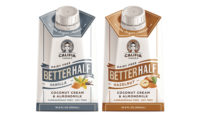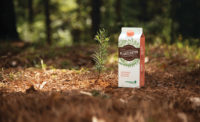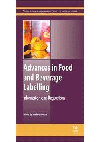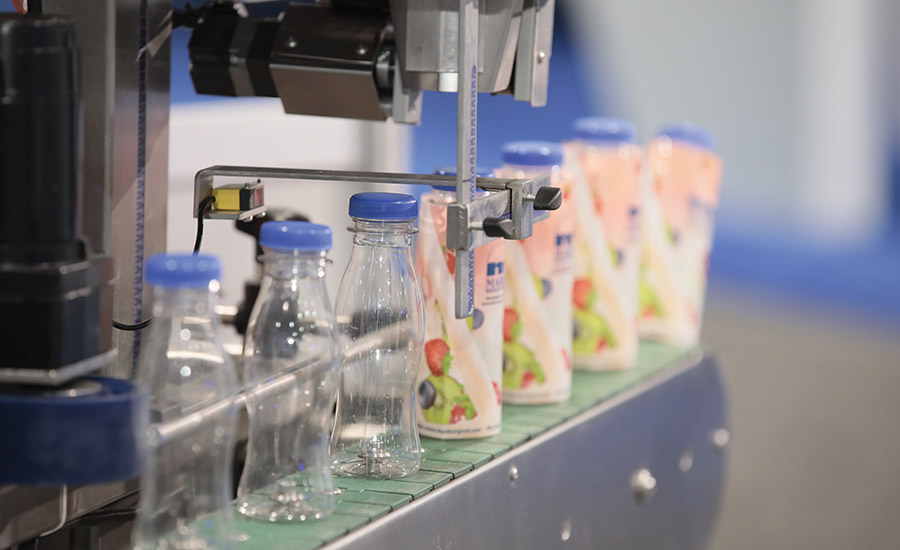Sustainability informs new rigid packaging innovations
A greater market focus on sustainability is leading to the development of more environmentally sound rigid packaging






Rigid packaging is undergoing a makeover. With consumers and product manufacturers putting pressure on packaging suppliers to develop designs that are eco-friendly, alternatives with biodegradable elements and less bulk are becoming more prevalent and helping to fuel greater sector activity.
The global rigid packaging market is forecast to have a 5.8% compound annual growth rate (CAGR) through 2023, with revenues reaching $729.1 billion, according to Portland, Ore.-based Allied Market Research. Packaging materials include plastics; metals such as aluminum, stainless steel and tin; paperboard; and glass.
“Rigid packaging plays a key role in the food and beverage industry, as the materials provide longer shelf life and such unique benefits as high impact strength, stiffness and barrier properties,” Allied notes.
Plastic leads
Plastic is the dominant material, with a 6.9% CAGR forecast through 2023, Allied reports. Plastic rigid packaging also is lighter in weight and has a strong ability to maintain product freshness and reduce breakage while often costing less than alternatives, Allied states.
Indeed, more than one-third of food launches use plastic packaging, states Mintel, a global market research firm, in its June 2019 “Food Packaging Trends — US” report. Yet growth levels may shift as consumers become more aware of the environmental ramifications of plastic waste, Mintel notes.
“Concerns are growing and consumers are reflecting on their usage and disposal habits of plastic items,” Mintel states. “Manufacturers are challenged to streamline packaging and empower consumers to feel confident in responsible recycling initiatives.”
In a March 2019 Mintel online consumer survey, 63% of respondents indicated that maintaining product freshness was an important packaging element when choosing food and beverages. Also seen as important is being resealable (cited by 51% of respondents), recyclable (40%), durable (33%), reusable (21%), lightweight (16%) and compostable (13%). The 1,952 adult respondents are responsible for household food and beverage shopping.
Among just beverage packaging innovations, 50% of consumers expressed interest in bottles that are made from 100% recycled plastic, 44% in shatter-proof bottles, 29% in ultra-lightweight bottles, 27% in self-chilling cans and 26% in cans with grips to prevent slipping.
“Consumers are interested in a range of means that could be implemented by brands and retailers to help engage them in new and enhanced sustainable practices,” Mintel states. “While consumers are already well-attuned to the importance of more eco-friendly and recyclable packaging, this is a mounting area of concern and a domain of innovation, in materials as well as broader concepts.”
Because about a quarter of food and drink shoppers say they plan to make a switch to products that use minimal packaging within the next couple years, brands will need to explore ways of doing more with less, Mintel notes.
“Retail initiatives, including waste-free and packaging-free options, and loop programs that allow consumers to utilize refillable containers to avoid packaging excess are ushering in a new approach to consumption,” Mintel reports.
Brands that take the lead on sustainability also will stand apart from the crowd, Mintel adds.
“Changes in how consumers eat and shop for food necessitate changes in packaging in order to preserve relevance,” Mintel notes. “Consumers, especially younger generations and parents, are looking to companies to take the lead, and opportunities may lie with innovative, proactive players in this arena.”
A move to alternate materials
Rigid packaging manufacturers already are moving to make containers more sustainable.
For instance, newer designs from Stanpac Inc., a Smithville, Ontario-based supplier, contain a bio-based polyethylene (PE) resin coating from sugar cane for use as a moisture and vapor barrier, as well as paperboard containing 30% recycled fiber and 66% less PE coating, says Murray Bain, vice president of marketing.
“We are at the beginning of a major shift towards alternate raw materials that will be either recyclable, compostable or capable of both,” he states. “There is ever-increasing global pressure to reduce the amount of plastic in packaging and to develop ways to reuse or recycle. Ice cream companies, for example, are rethinking what is necessary and asking tough questions like ‘does it really have to be this way?’”
It can be challenging, however, for packaging developers and brands to maintain optimal product freshness and safety while reducing the amount of packaging materials, Bain states.
Yet changes are forecast to be ongoing. Manufacturers, for instance, will likely make cardboard and paperboard packaging, which brands often use for such dairy products as milk and ice cream, more environmentally friendly to cater to evolving consumer preferences, states IBISWorld LLC, a Los Angeles-based market research firm, in its June 2019 “Cardboard Box & Container Manufacturing in the US” report.
Plastics, meanwhile, will remain a threat to the cardboard and paperboard sector, IBISWorld states, noting that “as consumers grow more environmentally conscious, they may opt for more durable products as opposed to cardboard.”
Yet pinpointing the best rigid packaging alternative is one of the biggest issues confronting processors and merchandisers. Bain notes. He suggests that dairy producers, along with retail operators, survey consumers on what is most important to them.
“With so much innovation and new options becoming available, the question is, ‘Do I wait for the Holy Grail or do I jump on a current innovation that is on the pathway to the best solution?’” he states. “Companies should research what is commercial; find out what might be possible in the future; and talk to [their] customers to determine what they want.”
An increasing number of operators, meanwhile, are embracing refillable glass bottles because of the pressures that consumers are placing on manufacturers to reduce and reuse materials, Bain says. He notes that glass packaging is a particularly attractive option for dairy as it does not impart flavors or taste into products.
“Those seeking the most appropriate package should determine how the product tastes when packaged in various forms and how the product shelf life is affected,” Bain states.
Companies that leverage refillable glass bottles, however, must also address issues involving the distribution and return of containers, he says, adding that “this type of system is best suited for regional companies that control their own distribution, but the challenges can be overcome in many situations.”
Strength remains a necessity
Bottles consisting of polyethylene terephthalate (PET) will be particularly attractive to environmentally conscious consumers, as the containers have higher levels of recycled content. So do cartons made from plant-based fibers, papers and substrates, says Jorge Izquierdo, vice president of market development for The Association for Packaging and Processing Technologies (PMMI), Reston, Va.
Such packaging — lighter and containing more natural materials — is becoming increasingly popular for milk and other dairy beverages, he notes.
Regardless of the materials, however, rigid packaging manufacturers are looking to “thin the walls” while maintaining the structural integrity and durability necessary for safeguarding food products en route to the consumer, Izquierdo notes.
Indeed, keeping dairy products fresh and safe requires that rigid packaging be strong enough to withstand supply chain processes and thin enough to be environmentally friendly, says Mike Sugrue, vice president of sales for containers for the Consumer Packaging North America Division of Berry Global Inc., an Evansville, Ind.-based packaging developer.
“Plastics are a superb and lightweight material that helps extend shelf life and reduces the amount of gas emissions released during transit,” he says.
In addition to studying consumer preferences, product developers can better determine the most appropriate rigid packaging for each item by understanding their products’ unique characteristics and how consumers engage with the packaging over its lifecycle, Izquierdo notes.
“This holistic perspective helps packaging professionals troubleshoot threats to product integrity and freshness along the supply chain, which is increasingly complicated with the growth of e-commerce,” he states. “Suppliers of materials and containers can be an important resource to guide brands in this decision-making, ensuring that they ask all the right questions to achieve the best format for the application.”
Change can be challenging
Altering or adopting new packaging, however, may be tricky for the manufacturers that must make major capital investments or other major updates to the production floor, Izquierdo says.
“These changes require a thorough understanding of any new equipment; any necessary tweaks to plant operations and quality control; and the skills and resources to maintain output while implementing adjustments,” he states.
Manufacturers seeking to produce new types of rigid packaging also may have difficulty in upholding product quality while switching the container format, Izquierdo says.
“It is especially important that brands aiming to light-weight or alter packaging for sustainability assess the impact that changes will have on operations and distribution,” he notes. “Aggressive material reduction may seem like the right step, but manufacturers should always factor potential product and energy waste if the format is too flimsy to run efficiently on current or new equipment, or if it is more damage-prone, resulting in fully costed waste before the consumer purchase.”
Operators can best address such issues by partnering with manufacturing experts, contract manufacturers or other companies that already are able to produce the desirable packaging format, Izquierdo says.
He adds that industry associations also can enable brands to better understand the issues they might face and the considerations necessary to prevent downtime, technical issues or other potential hang-ups.
In addition to being more environmentally sound and durable, rigid packaging is becoming more attractive because of advances in label and printing capabilities that are enabling the use of more wraparound and vibrant graphics in eye-catching colors on containers, Izquierdo notes.
“These techniques help to boost brand identity and deliver a more personalized product to the consumer,” he states.
Upgrades to digital printing and in-mold labeling also are resulting in packaging that supports stronger brand differentiation on store shelves, Sugrue says, adding that such innovations enable merchandisers to be more creative while dealing with budget constraints.
Yet an overall greater marketplace focus on sustainability, including demands for packaging that use less materials, is having the biggest impact on the evolution of rigid packaging, Izquierdo states. Ongoing competition among rigid packaging suppliers, meanwhile, will contribute to further design upgrades, he says.
“Formats must compete with alternatives that have traditionally offered greater support for portion control, convenience and other consumer demands,” Izquierdo adds.
Looking for a reprint of this article?
From high-res PDFs to custom plaques, order your copy today!











